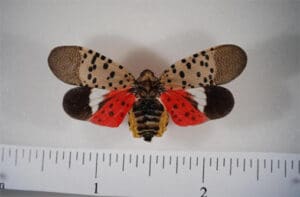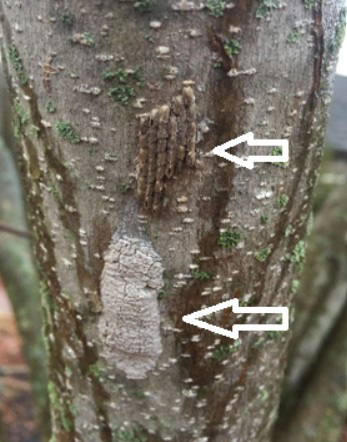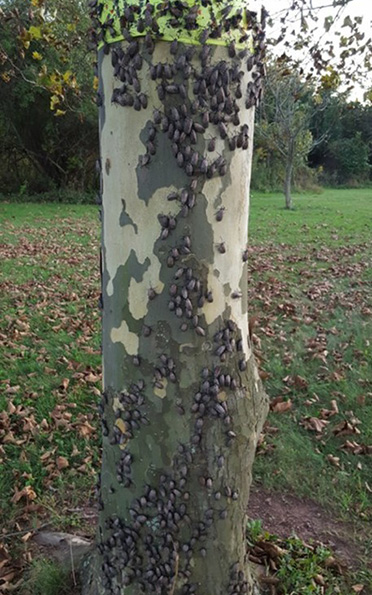Spotted lanternfly adult (Lycorma delicatula) next to a standard 12-inch ruler
Spotted lanternfly (Lycorma delicatula–SLF) is an invasive planthopper, first discovered in New York City in July 2020. While it can infest trees, it is not considered a widespread threat to our city’s forests. However, it is a significant threat to a wide range of agricultural crops including walnut, grapes, hops, apples, blueberries, and stone fruits. The Tree of Heaven (Ailanthus altissima) is its preferred host tree and is required for its reproduction. SLF has the potential of damaging natural areas and becoming a nuisance in landscapes.
What does a spotted lanternfly infestation look like?
The spotted lanternfly does not typically kill trees, it infests. Although it can weaken a tree’s natural defenses (making it vulnerable to other pests and diseases), spotted lanternflies are mostly a threat to agricultural crops.
You can identify an infestation by looking for:
- Inch-long, putty-like egg masses that may crack throughout the winter
- Dense clusters of the insects on tree trunks and branches
- Sticky “honeydew” with a distinct odor, which is excreted by the insects and may be covered in black “sooty” mold
What is NYC Parks Doing About Spotted Lanternflies?
- Caring for infested trees will follow Parks’ Tree Risk Management program — pruning and removing trees as they pose a risk to the public.
- Parks is participating in an interagency work group with federal, state, and local agencies to coordinate surveying and treatment approaches.
- Parks is not currently considering widespread treatment due to uncertainty of the success of chemical treatments and the prohibitive cost; however, we may treat limited high-value trees at risk of infection if it is deemed necessary.
How You Can Help
- Harming our city’s wildlife is prohibited, but in an effort to slow the spread of this troublesome species, we are putting out a one-time call: if you see a spotted lanternfly, please squish and dispose of this invasive pest.
- You can help prevent the spread of spotted lanternflies by refraining from moving firewood, outdoor furniture, and other outdoor items that may contain SLF egg masses.



